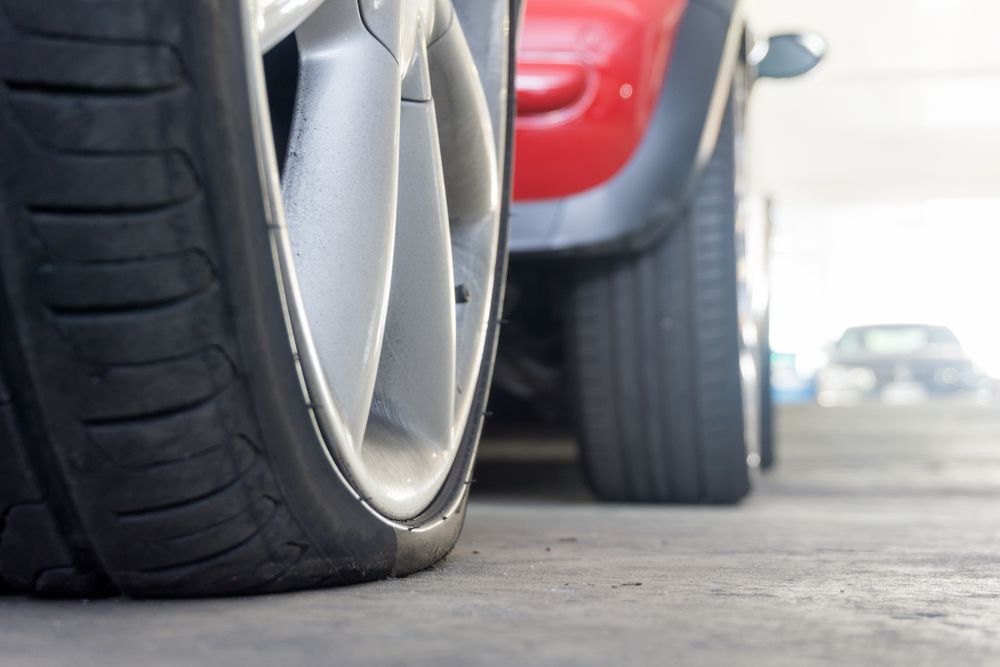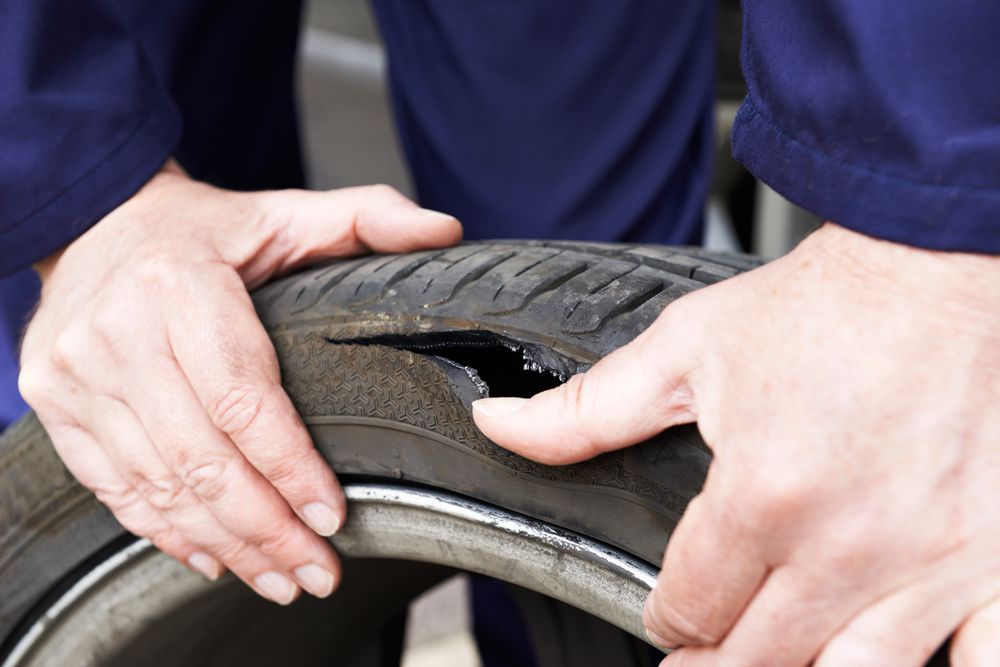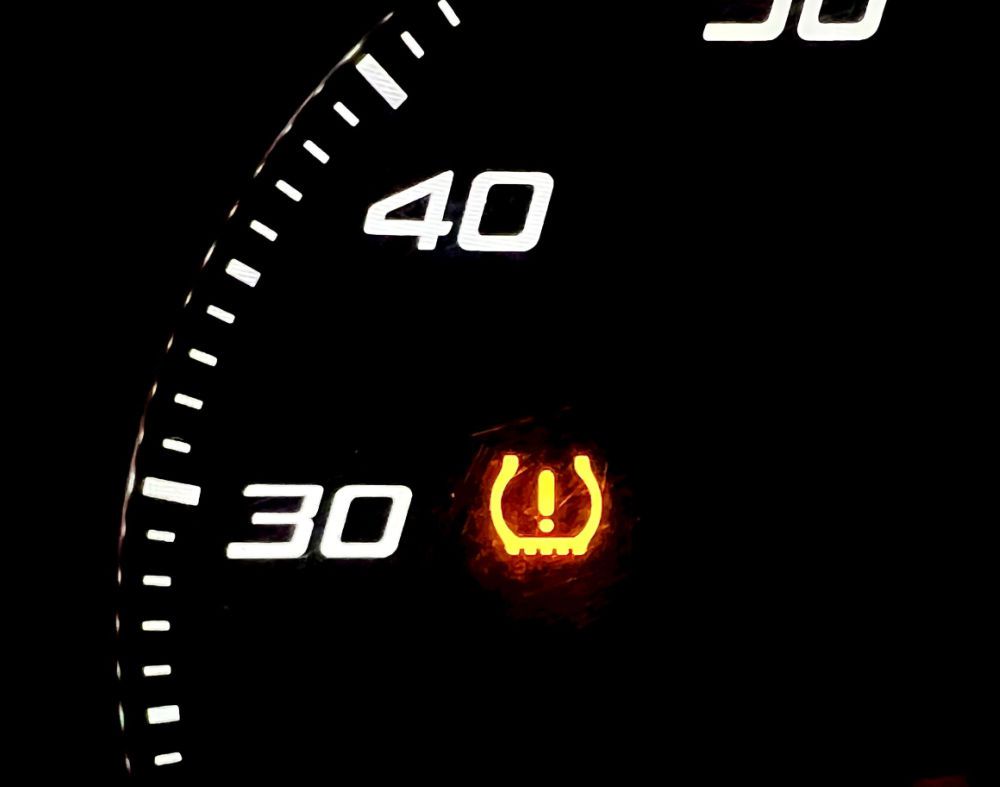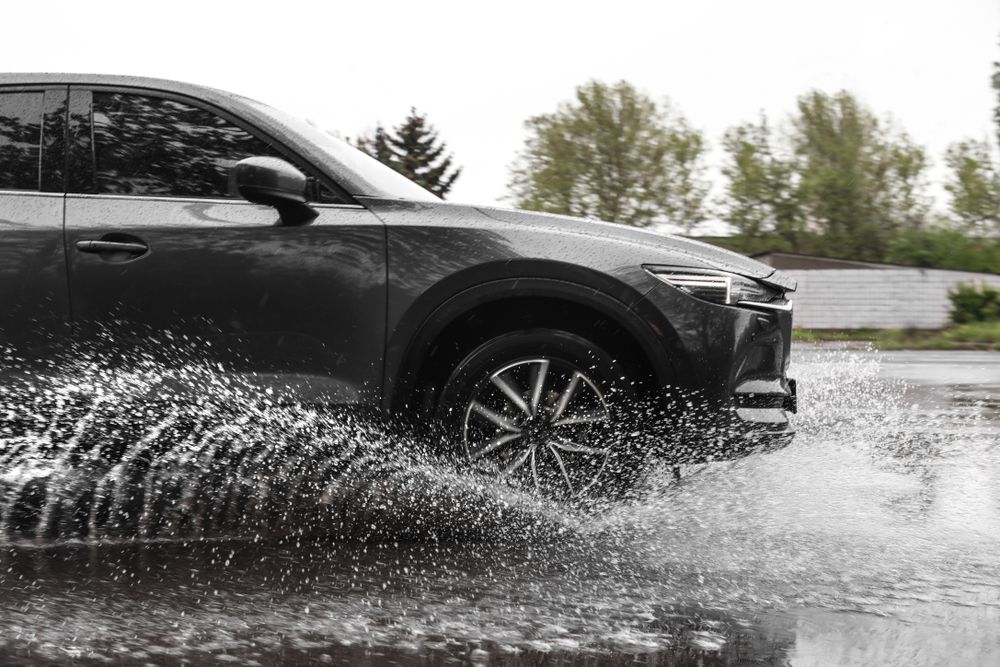Driving with low tire pressure puts you and other road users at risk.
Tire pressure below 30 PSI is considered low, but 20 pounds per square inch and below is extremely low.
Driving without enough air in your tires can cause blowouts and complete loss of vehicle control, wreaking havoc on your safety. However, emergencies can warrant driving in such conditions.
Below, we discuss the dangers of driving without enough tire pressure, what to do when your tire pressure warning light glows, and what inadequate pressure feels like.
 A car tire with a low tire pressure.
A car tire with a low tire pressure.
Why You Shouldn't Drive with Low Tire Pressure
Continuing to drive with low tire pressure is awfully dangerous.
Not only does it promote premature tire wear and reduced fuel economy, but insufficient air pressure can cause complete loss of vehicle control and blowouts, resulting in potentially fatal accidents.
Imagine traveling at 60 mph down the highway when you suffer a tire blowout.
You'll lose traction and control at such a high speed, endangering yourself and other drivers.
A study conducted by the world's leading manufacturer of sensing and valve solutions, Schrader International, showed that a mere 58% of drivers could correctly point out the tire pressure monitoring system light.
This finding makes alarming sense when considering the number of tire-related crashes yearly is a whopping 11,000.
Despite that, you can drive for short periods in certain conditions during an emergency if you don't have another option.
Dangers of Driving with Low Tire Pressure
As mentioned earlier, the most dangerous part of driving with low air pressure is the risk of a blowout.
Sidewalls flex on under-inflated tires more than normal (especially when braking or cornering), building heat.
Over long drives, low-pressure tires don't get as many chances to cool down, causing blowouts.
But that isn't the only problem.
An under-inflated tire is more likely to suffer a puncture since it's softer than it should be.
While this won't necessarily cause tire failure at the tie, it'll slowly leak air, eventually impacting your car's handling and triggering the tire pressure warning light.
 A tire failure as a result of low tire pressure.
A tire failure as a result of low tire pressure.
Low Tire Pressure Affects Gas Mileage
Aside from impacting your ability to drive safely, low tire pressure affects fuel economy.
If you've ever ridden a bicycle with a near-flat tire, you'll understand how much effort it took to keep it moving.
The same applies to your car.
Low air pressure forces your vehicle to exert more energy to roll itself forward, thus using more fuel and negatively impacting your gas mileage.
Low Tire Pressure Reduces the Life of Your Tires
Inadequate tire pressure causes uneven tire wear around the tread.
Generally speaking, you'll see it on the inner and outer shoulders.
While many people ignore their tire pressure light, heading to the gas station to add air is much cheaper than replacing all four tires!
You should get into the habit of checking your tire pressure and inserting more air when the warning light shines.
What to Do When Your Low Tire Pressure Light Comes On
Follow the steps below if your tire pressure warning light switches on:
- Understand tire pressure recommendations — The owner's manual or driver's-side door jamb gives you the manufacturer's recommended tire pressure level.
- Check the tire's air pressure — Use a tire gauge to check the car's tires. You can buy one from an auto parts store for under ten dollars. Don't forget to check your spare tire.
- Add air at the perfect time — Replenish air when needed, ideally two or three hours before or after driving, for the most accurate reading.
 A low tire pressure warning light.
A low tire pressure warning light.
Don't Rely Solely on Tire Pressure Monitoring Systems
Your car's tire pressure monitoring system warns you about air leaks.
However, you can't rely too heavily on them.
Instead, you should regularly inspect your tires (and the rest of your vehicle) for potentially dangerous problems, such as under-inflated tires.
Conducting your own inspections ensures you spot and sort issues before they become massive safety concerns.
What Does Low Tire Pressure Feel Like?
For most somewhat-experienced drivers, detecting low tire pressure is pretty straightforward.
After all, it affects the vehicle's handling so much it's hard not to notice it.
But if you're a relatively new driver or have yet to experience insufficient air pressure, here are some of the most common signs:
- Your vehicle might make a flapping sound when traveling. The noise typically grows louder as you drive faster.
- It feels tighter or harder when steering.
- It's more difficult to keep your vehicle traveling in a straight line.
- Your car takes much longer to stop than normal.
- It feels strange when braking.
- You're noticing lower miles to the gallon.
How Long Can You Drive with Low Tire Pressure?
You shouldn't drive when your tire pressure is low.
As soon as the tire pressure warning light glows, you should add air to prevent catastrophes.
That said, some emergencies warrant driving on tires with low pressure.
So, if you have to drive with extremely low air, travel cautiously and try to get home (or to a garage) in as few miles as possible.
Assuming you own a standard passenger car, the lowest drivable pressure is 20 PSI.
While it's less-than-ideal, it should be safe.
Although, it truly depends on the terrain and weather conditions — icy, snowy, or rainy weather severely impacts safety.
What Happens If You Drive on Low Tire Pressure?
If your tire pressure is just slightly low, your vehicle should run safely for several miles until you can replenish the air.
However, blowouts are likely if your tires don't have enough pressure, which can cause accidents.
Plus, you'll experience poor road grip and terrible shock absorbance.
In normal conditions, you might not notice, but driving without traction in adverse weather is extremely dangerous, especially when navigating corners.
Driving in Snow with Low Tire Pressure
Tires and snow don't mix at the best of times.
Add inadequate pressure to that, and you're in for a bad time.
In these conditions, never drive longer than 40 miles or half an hour without enough air in your tires.
Cold climates cause quicker deflation, so check the pressure regularly in winter to avoid driving with insufficient pressure.
Driving on Ice with Low Tire Pressure
The common belief is that lowering your tire pressure during winter will increase traction.
Hopefully, you now understand that this isn't true.
Reduced air pressure decreases the tire's ability to hug the road, increasing your risk of crashing.
Drive cautiously in icy conditions, and regularly check your tire pressure, even when the warning light isn't illuminated.
 Driving in the rain with low tire pressure.
Driving in the rain with low tire pressure.
Driving in Rain with Low Tire Pressure
Rain increases your vehicle's stopping distance, as does insufficient tire pressure.
Therefore, you must leave extra room behind the vehicle in front of you for maximum safety and never drive longer than 30 minutes.
Driving Long Distances with Low Tire Pressure
No matter the terrain or weather, you shouldn't drive long distances without properly tire inflation.
In normal conditions, one hour is the maximum driving time.
Driving on Pavement with Low Tire Pressure
You shouldn't travel further than 0 miles on paved roads; always pay attention to the weather.
If conditions worsen, pull over.
Conclusion
You shouldn't use your vehicle with low tire pressure as the risks of blowouts and loss of control are too high.
However, if an emergency arises, keep driving as slow as possible and never travel long distances.